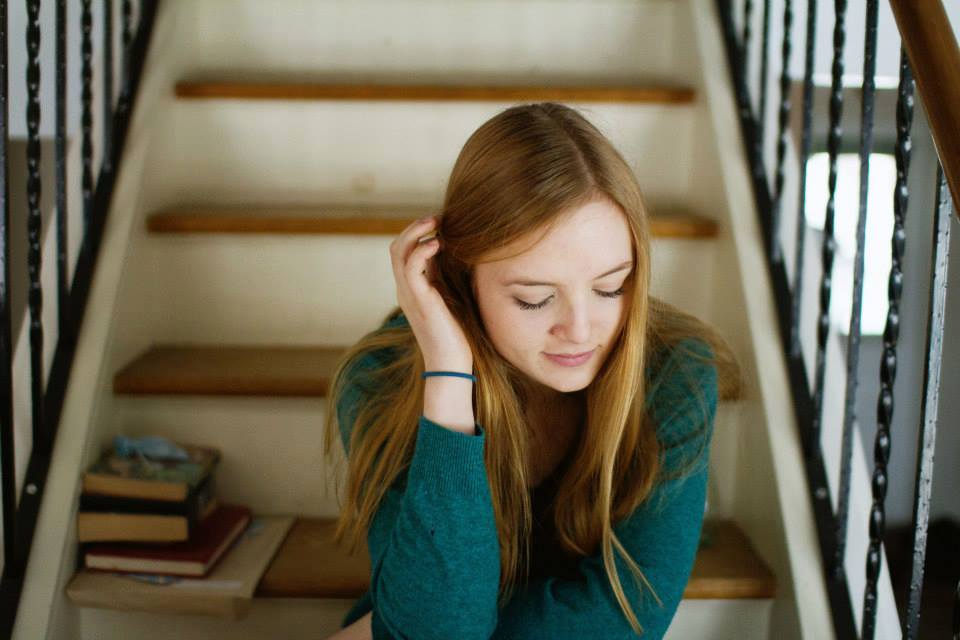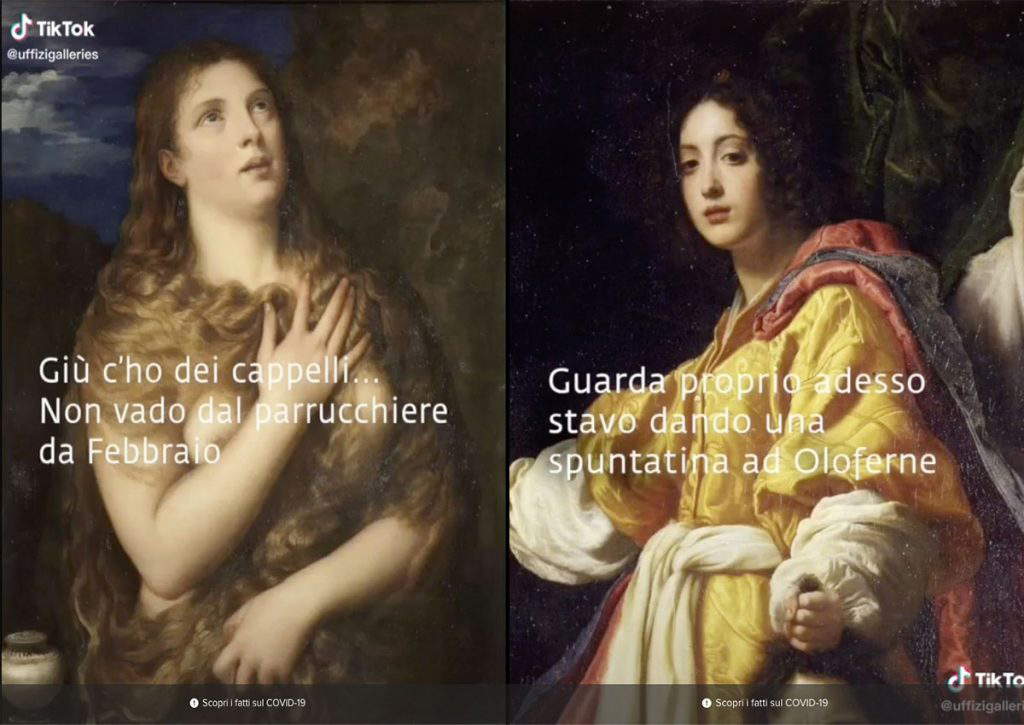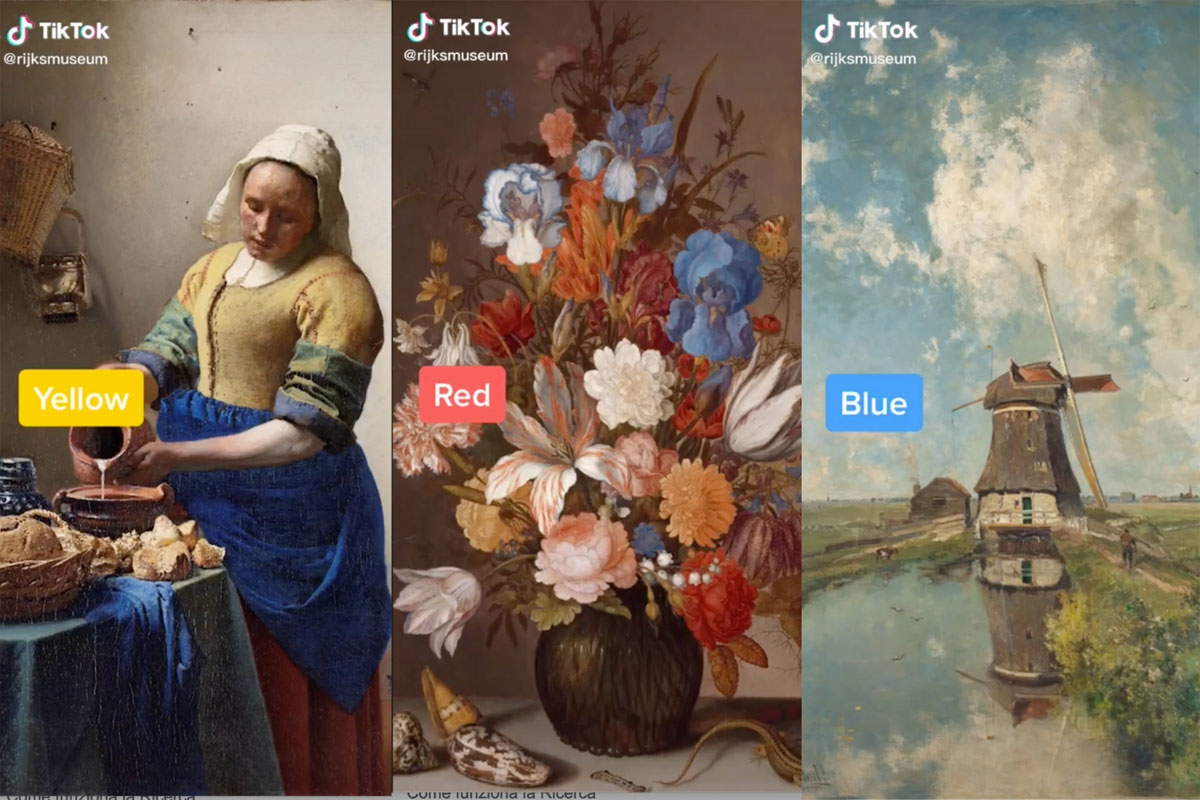TikTok and museums: a hot topic. How are museums doing on the social network popular with younger people? What are the best practices? How should museums orient themselves to use TikTok to their advantage? We talked about this and more with Emma June Huebner, an artist and multimedia technology teacher at Ville Sainte-Marcelline School in Westmount (Quebec, Canada), and a research assistant at Concordia University in Montréal, specializing in the field of museum education practices. Huebner will give a talk entitled TikTok and Museum Education: A visual content analysis as part of the MUŻE.X - S - Shaping Museum futures conference , of which Finestre Sull’Arte is a partner. The interview is by Ilaria Baratta.

IB. Museums have increasingly opened up to social networks. TikTok is the latest in the series: how widespread will the use of Tik Tok in museums become?
EJH. Although TikTok has been downloaded 2.6 billion times and is widely used around the world, cultural organizations have been slow to follow the trend. At present, TikTok is mainly used by European museums. Most Canadian museums in contrast do not have an account. However, with the rapidly changing social media landscape, it is difficult to know exactly what impact the app will have on the museum sector.
And the museums that do use it, how are they using it? What content are they publishing in general? On average, how many times in a week do museums post on Tik Tok?
Museums are mainly using what I called in my research, on the one hand, “performative trends,” and on the other hand, “expert voice” (“expert voice”), which are traditional museum practices adapted to TikTok. Trend-based videos, editing-based videos, and dance-based videos are three types of TikTok posts associated with the theme of performative trends. Trend-based and editing-based videos predominantly follow TikTok practices rather than museum education practices, while dance-based videos take a more hybrid approach that incorporates both TikTok and museum education practices. Typically, these videos include posts that use TikTok trends, for example, dance-based challenges or popular music tracks on the app. All of this has led to museums integrating user-generated content into the process of creating their videos-that is, it is content that is already on the app, which the museum can reuse in creating its own videos. In this way, such videos are presented according to the patterns and conventions of social, and become part of established networks. On the other hand (“expert voice”), TikTok videos that include 60-second curator presentations or detailed descriptions of works are types of videos that I position as informative expert presentations on works in the collection. In addition to following the 60-second TikTok format, these videos do not use any TikTok practices and primarily follow traditional museum practices. These videos use an exhibition and teaching approach in which the “teacher” does not have to be a real-time human (Hein 1998). TikTok videos and other newer forms of educational materials involving social media and digital technology could be added to this list. For example, the Rijksmuseum has created a series of TikTok videos called “a work of art in 60 seconds.” This kind of video features a curator on screen in front of a work of art as he formally describes it. The viewer can see an overlay of a clock in the upper left corner, counting down the seconds of the video. The curator’s name and area of specialization appear as an overlay at the beginning of the video. Similarly, another recurring practice in TikTok videos with the “expert voice” are simple descriptions of paintings. These videos do not contain people and tend to magnify the details of the painting. The descriptions, told in a narrative tone, provide information about the details of the work.
Can we therefore consider Tik Tok a new participatory art practice for museums?
If TikTok is used in collaboration with visitors, I definitely see the app as a participatory art practice. For now, most museums create content and distribute it to visitors. This approach fails to recognize an important element, which is that one of the main reasons social media platforms are popular is that they encourage user-generated content, namely content created by people and not by institutions or brands. Based on the study I conducted, the videos that stand out among the genre of “performative trends” are those based on dance. What is noteworthy compared to other performative videos (beyond the way they pose toward art) is that they are produced in collaboration with young viewers. One of the main reasons why TikTok is popular is because the content is primarily user-generated. Sharing visitor-generated content on the museum’s account, as opposed to sharing content produced by the museum itself, is an approach in line with broader trends in museum education that involve visitors participating and co-creating in the museum space. In the future, I imagine visitors might not only dance in response to artworks, but they might create their own dialogues for museum objects and paintings, recreate the soundscapes of artworks, record and share their own interpretation of a work, or learn how to edit videos and share their creations in effective ways. Educators can easily integrate this into their practice because many museums already have iPads or other mobile technologies, and TikTok allows in-app editing, which means no additional materials are needed. In addition, young people will already be familiar with this mode of expression, which suggests that they will feel comfortable and perhaps be motivated ??to participate in activities that require the use of platforms they enjoy. Content created by museums and visitors could then, in turn, be developed or expanded by other users from home into their own creations.


Tik Tok allows users to post very short content, just a few seconds... Are they more serious and informative or more fun and humorous?
Based on my study, and as mentioned earlier, museums have adopted different styles of videos. Museums mainly create exhibition and educational videos or videos that follow trends. These videos are then incorporated into traditional museum practices or popular social conventions. In the context of theories of museum learning, the results of my study suggest that museums should attempt to create a hybrid practice to achieve both the goals of museums and the goals of TikTok.
Can you give some examples of museums using Tik Tok in the best way?
It is difficult to determine which museums are doing best in using TikTok, because it is all about balance.
Here in Italy, the way the Uffizi Galleries are using Tik Tok has raised a lot of debate. What do you think of this major museum’s Tik Tok channel?
My research focused mainly on the Uffizi and the Rijksmuseum, and both museums had very mixed approaches to using the app. I think both museums are doing an incredible job, innovating in their own ways and helping to make museums more accessible to young people. Based on the findings of the research, which looked at TikTok and museum education, the museums on TikTok have not seamlessly merged traditional educational practices and social media practices, creating a kind of middle ground. Predominantly, they have either adopted an exhibition and didactic approach to their content creation or, conversely, they have fully utilized the popular practices of TikTok, setting aside almost all museum education practices. Some questions therefore arise: what are the implications of using TikTok for museum educators? How can museum educators use the app to connect visitors with collections and adopt TikTok practices? Because TikTok is a sui generis social network, museums can reach their normal audiences by participating in the challenges of the social, but can these challenges and trends also communicate something about their collection or allow visitors to connect with the artwork in a meaningful way? More research will need to be done to address the issue of museum education through social media to better understand the goals of museum educators and to understand what young people’s current response to shared content is, which I have tried to do with my research (results will be published next year). In addition, given the shift toward participatory practices in museum education, I suggest that we also conduct a participatory action-research study with children and youth inside the museum to better understand the scope of what TikTok offers museum educators. I hope to conduct this project as part of my doctoral research starting next fall.
Warning: the translation into English of the original Italian article was created using automatic tools. We undertake to review all articles, but we do not guarantee the total absence of inaccuracies in the translation due to the program. You can find the original by clicking on the ITA button. If you find any mistake,please contact us.